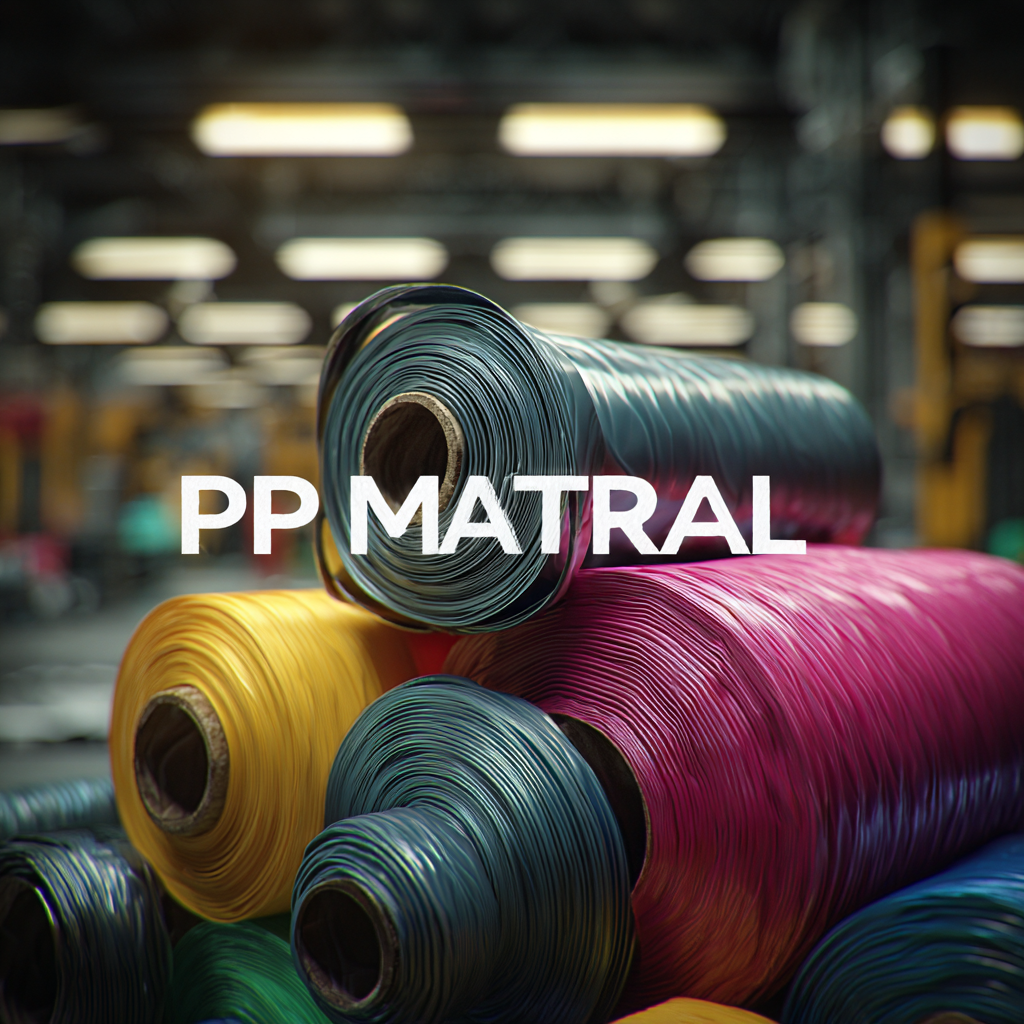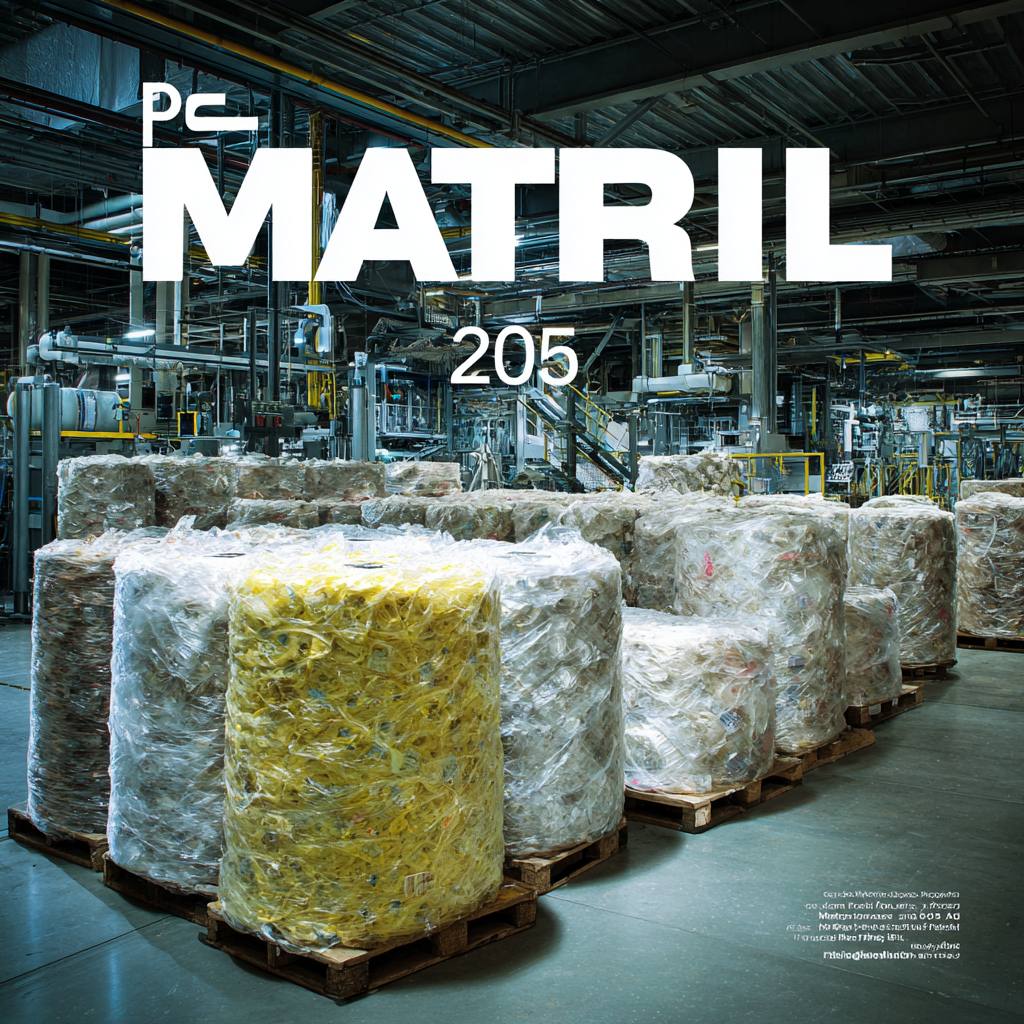


The plastic manufacturing industry is experiencing a dynamic transformation, particularly with the increasing demand for polypropylene (PP) material, projected to grow by 30 percent by 2025, according to a recent report by Research and Markets. As industries seek more sustainable and efficient solutions, the versatility of PP material stands out, offering excellent chemical resistance, lightweight properties, and cost-effectiveness. This rise in demand is driven by urbanization, technological advancements, and a shift towards eco-friendly alternatives in packaging, automotive, and consumer goods sectors. Moreover, the implementation of stringent industry production standards promotes innovation in manufacturing processes, further enhancing the appeal of PP material. As stakeholders navigate this evolving landscape, understanding the trends and best practices in PP manufacturing will be crucial for capitalizing on growth opportunities and meeting the future demands of the market.

As we look ahead to 2025, the plastic manufacturing industry is on the brink of transformative innovations that promise to reshape production processes and material efficiency. One of the key advancements is the enhancement of polypropylene (PP) materials, which are projected to experience significant growth due to their versatility and sustainability. Manufacturers are increasingly adopting advanced polymer processing technologies, enabling them to produce PP with superior characteristics, such as increased durability and reduced environmental impact.
In addition to material improvements, automation and smart manufacturing techniques are set to revolutionize the industry. The integration of IoT devices and AI-powered analytics will facilitate real-time monitoring of production lines, enhancing operational efficiency and reducing waste. Furthermore, the shift towards circular economy practices drives innovations in recycling technologies, allowing for the repurposing of plastic waste into high-quality PP materials. These developments reflect a commitment to sustainability while meeting the rising demand for lightweight and durable plastic solutions in various sectors, from automotive to packaging.
| Innovation | Description | Expected Growth (%) | Sustainability Impact |
|---|---|---|---|
| Biodegradable Additives | Incorporation of natural additives to enhance biodegradability of PP. | 30 | Reduces pollution and landfill waste. |
| Recycled PP Blends | Mixing post-consumer recycled polypropylene with new materials. | 25 | Promotes recycling and reduces resource depletion. |
| Smart Packaging Solutions | Developments in responsive and interactive packaging technologies. | 20 | Enhanced user experience and reduced waste through smarter usage. |
| Lightweight Materials | Innovations that decrease the weight of plastic products. | 15 | Lowers energy consumption in transport and production. |
| Advanced Injection Molding | Improvements in injection molding technology for efficiency. | 10 | Minimizes material waste and enhances product quality. |
Polypropylene (PP) has emerged as a leading player in the plastic manufacturing industry, thanks to its superior qualities and versatility. As a thermoplastic polymer, PP is known for its lightweight, chemical resistance, and resilience, making it an ideal choice for a wide range of applications, from automotive components to food packaging. Its unique attributes allow manufacturers to create products that are not only durable but also environmentally friendly, as PP can be recycled multiple times without significant degradation of quality.
The rising popularity of PP is reflected in the anticipated 30 percent growth in its production by 2025. This trend is largely driven by increasing consumer awareness regarding sustainability and the push for greener products. With advancements in manufacturing technology, businesses are able to harness the full potential of PP, enabling them to produce innovative solutions that meet the demands of modern-day consumers. As companies seek to balance performance with environmental responsibility, the scope for PP in various industries continues to expand, solidifying its status as the rising star of plastics.

The demand for polypropylene (PP) materials is projected to surge by 30 percent by 2025, driven by several key factors that highlight the material's versatility and adaptability across various industries. The global wood-plastic composite (WPC) market is expected to expand significantly, with a value projected at $6,400.5 million in 2025, reaching $12,941.7 million by 2033, marking a compound annual growth rate (CAGR) of 9.2%. This increase reflects the growing preference for sustainable building materials that also incorporate the durability and low weight of PP.
Similarly, the market for wafer carriers and operators is anticipated to grow from $701.3 million in 2025 to $1,153 million by 2033, with a steady annual growth rate of 6.42%. The rise in these markets signifies a broader industry trend towards efficient, innovative production methods that utilize advanced materials like PP. With its expanding applications in various sectors, including automotive and packaging, PP is set to capitalize on these market dynamics, supporting its robust growth trajectory in the coming years.

Sustainability is rapidly becoming a cornerstone of plastic manufacturing, as the industry grapples with the pressing need to reduce its environmental impact. Challenges such as rising production costs, regulatory pressures, and consumer demand for eco-friendly solutions necessitate innovative strategies. Companies are increasingly exploring alternative raw materials, such as bio-based plastics and recycled polymers, to meet sustainability goals while maintaining product performance.
In addressing these challenges, solutions like enhancing recycling technologies and developing closed-loop systems have gained traction. By investing in advanced recycling processes, manufacturers can turn waste back into valuable feedstocks, thus minimizing the reliance on virgin materials. Moreover, collaborations between stakeholders—from suppliers to consumers—are crucial to fostering a circular economy that promotes sustainable practices across the entire supply chain.
As 2025 approaches, embracing these trends will not only help in mitigating environmental issues but also position companies as leaders in a more responsible plastic manufacturing landscape.
The future of polypropylene (PP) material in various industries is poised for remarkable advancements, driven by its increasing demand. According to a report by Grand View Research, the global PP market size is expected to reach $155.5 billion by 2025, with a compound annual growth rate (CAGR) of approximately 30%. This surge is attributed to its versatile applications in packaging, automotive, and textiles, illustrating the material's key role in modern manufacturing.
In the packaging sector, PP is favored for its lightweight, durable, and recyclable properties. The Packaging Association indicates that the demand for sustainable materials has led to a rise in PP usage for flexible packaging solutions, which are projected to grow significantly, particularly in food and beverage applications. Moreover, in the automotive industry, PP is increasingly utilized for its impact resistance and thermal stability, with market analysts forecasting a shift towards hybrid materials that enhance vehicle performance while reducing weight.
The textile industry is also witnessing a transformation with the incorporation of PP fibers in nonwoven fabrics. The global nonwoven fabric market is projected to reach $50 billion by 2026, propelled by the growing demand for hygiene products and medical textiles. This trend underscores the versatility of PP, making it an indispensable material across diverse sectors, paving the way for innovative applications and sustainable solutions.
This bar chart illustrates the projected growth of polypropylene (PP) material usage across various industries by 2025. The automotive sector is expected to lead with a 35% increase, followed by packaging and consumer goods. These trends highlight the expanding applicability of PP material in modern manufacturing.